Before beginning any fitness routine, it is recommended that you consult with a health care professional. You are responsible for your own training!

In a grid-down situation, you will find that you are unable to rely on modern technology for everyday things that we take for granted. Things such as heat, transport, and even food preparation will need to be done by hand, and this will require you to have an above average level of physical fitness.
It is estimated that every 25 seconds, a person in the US will have a heart attack, and cardiovascular disease is responsible for 1 in 4 deaths. Your heart is the most important muscle to train. Cardio exercises involving vigorous full body movements, done in intervals of intensity for 30 minutes or more, every day are essential. Can you run for your life? Can you run for mine? In other words, would you be able to run and get first aid supplies quickly enough to save a life? Would you be able to outrun another person? Too many of us spend a lot of time planning and not enough doing. Part of that doing, is exercise. Survival in SHTF will require a great deal of physical fitness.
Do you have what it takes?
Below are some practical ways to get in shape in preparation for a break down in society, as well as gauge how prepared you really are.
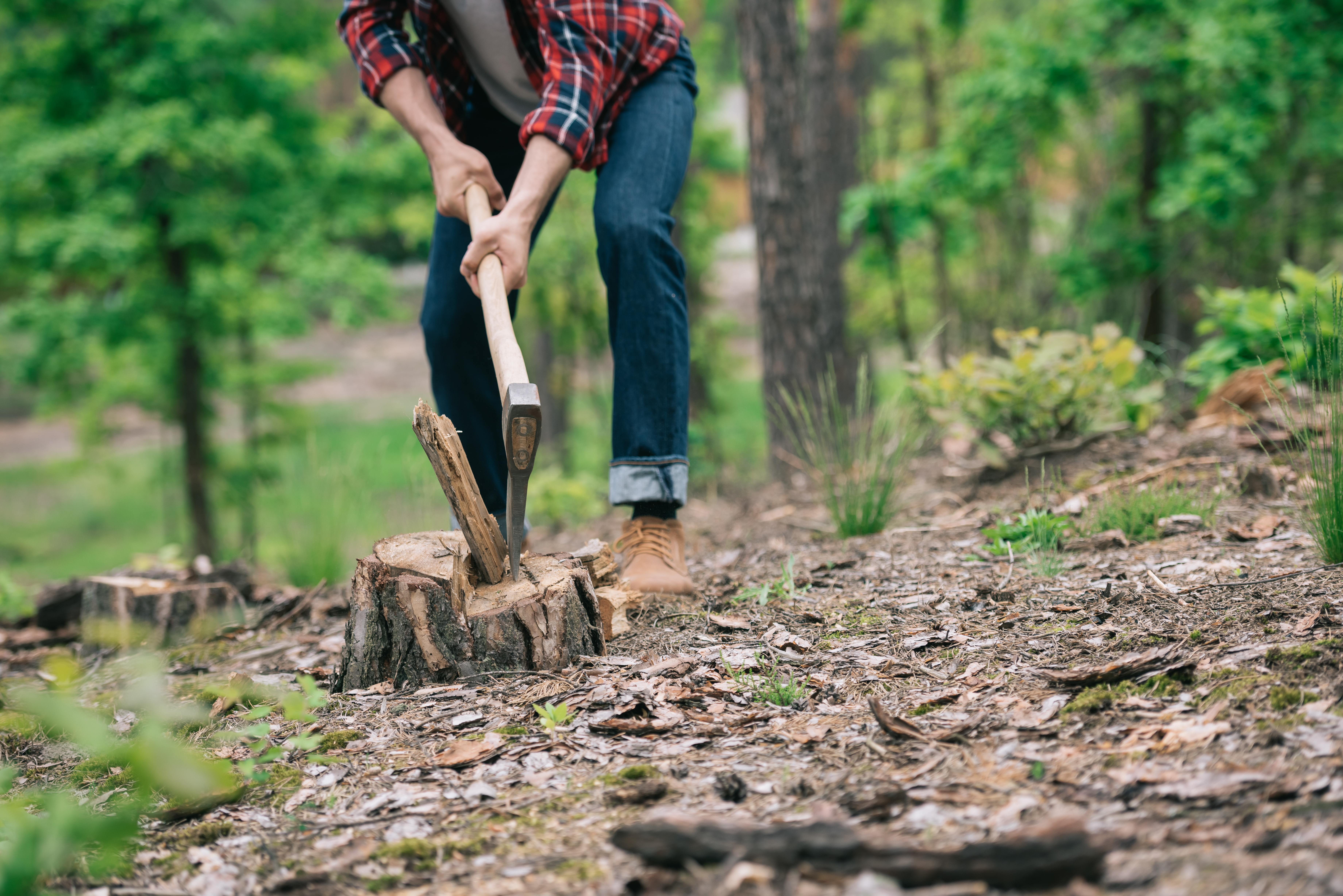
Chopping wood
A home can take anywhere from 4-10 cords of wood to heat for just one season, 1 cord being 128 cubic feet of wood (4 feet X 4 feet X 8 feet). Depending on the type of wood, diameter, as well as your fitness level, it can take the average person around 2.5 hours to split a cord of wood. If you had to chop 6 cords to keep your family warm during winter, how long do you think it would take you?
Exercise:
Place a marker on the ground to represent the tree you are chopping or the log you are splitting. Put on a pair of gloves and eye protection. Hold the axe or sledgehammer with your dominant hand near the head, and your support hand near the end of the handle. bring it up in an arc to the side, and slightly over the shoulder, bringing the axe head as high as you can safely control. The further the blade has to fall, the more power it will deliver per swing, however the closer your hands are to each other and the base of the handle, the less control you have over the axe. Can you keep your family warm?

Holding a rifle parallel to ground
Part of being prepared for a SHTF situation is having adequate security. Let’s imagine for a moment that you have taken fire from a shooter beyond 100 yards and they have taken cover. Or perhaps it’s the only deer you have seen in weeks and you sure are hungry. How long would you be able to keep your rifle up and ready to take a shot to save your life should they expose an inch of themselves to you?
Exercise:
Handled safely, bring your rifle to your shoulder and look down the sights. Time yourself. How long before your arms get too tired to be accurate?

Walking with gear on inclines and flat ground
If the grid goes down, fuel will not be as abundant as it is now. It will be a lot more common to use human powered means of transporting goods and supplies. Whether this is your bug-out bag, or other provisions, being able to carry weight over distance and varied terrain is an asset.
Exercise:
Get online and find a nice hiking trail nearby, or if you are close to civilization find some streets nearby with a mix of hills and flat ground. Strap on your bug-out bag and start walking. Use a pedometer to monitor your pace and see how long you can walk before you get muscle fatigue, then try to walk a little bit further next time. Bonus: carry your bag on your chest supported with your hands. Additionally you can add intervals of sprinting.
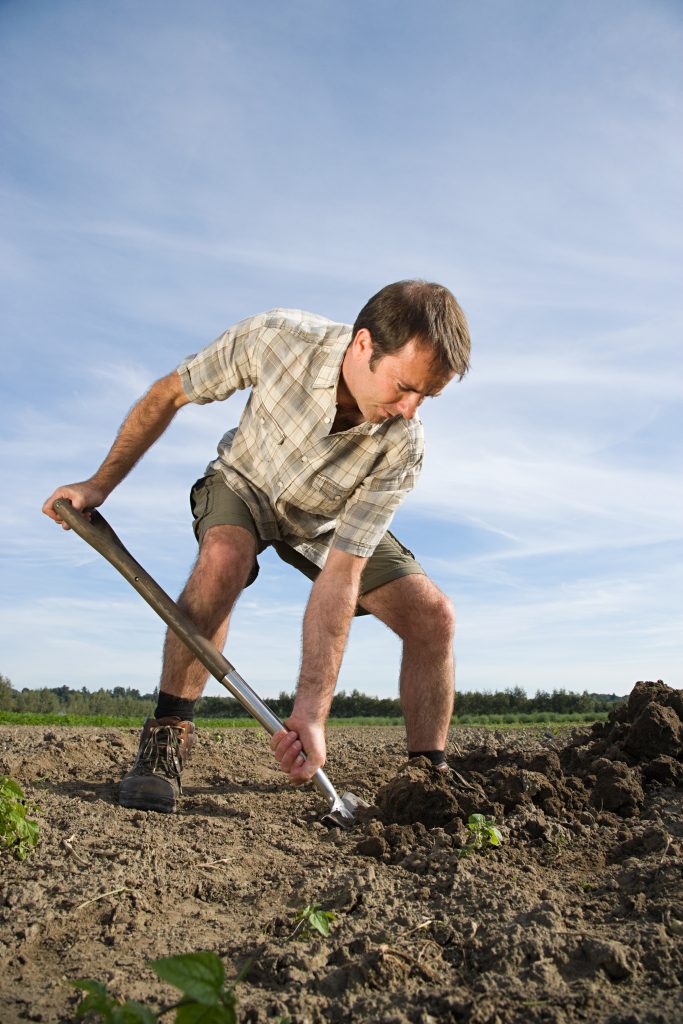
Digging
Sometimes you just have to dig a hole, whether it’s a latrine, or a clandestine cache for resupply, or the need to bury a body. You want to know that you are physically up to the task.
Exercise:
(I understand some people reading this don’t have land of their own or are unable to do this one, to which I apologize and suggest improvisation.) Construct a pair of sand boxes the don’t need to be much more than a meter square each and should use 2×12 for the outer wall. Place them right next to each other to mitigate spills. Fill one side with sand and leave the other empty. Take a shovel and begin transferring sand from one box to the other, and when you have finished transfer it back. How many times can you continue this transfer? Bonus: Make the sand wet.

Loading equipment and supplies on and off of a vehicle
Sometimes there is too much stuff to be carried by hand, and you need to use a vehicle. You may be in a resupply situation where you could be ambushed by other people who want those resources too. How fast can you get the goods, load them up, and move out?
Exercise:
If you have a bug-out vehicle, practice loading and unloading your gear. If you have a bug-out bag but not a vehicle, practice picking it up and moving it from one side of the room to the other repeatedly. If you don’t yet have a bug-out bag, use a small box of books, a large brick, or something else with a good deal of weight to it.
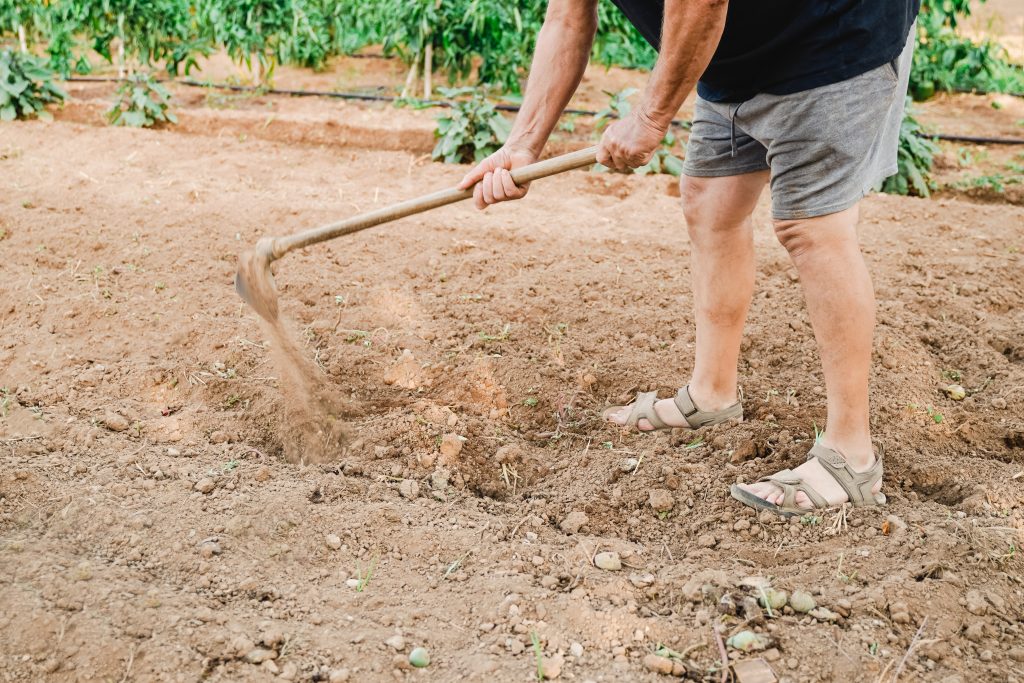
Gardening
One of the most essential tasks you will find yourself doing after the grid goes down is ensuring that you have enough food to survive. This will eventually mean growing it yourself, which is more than just putting plants in the ground and waiting. Gardening means preparing the soil; clearing rocks and other debris, digging, weeding, mixing in fertilizers, mulching, and preparing the bed. After planting it will require daily watering, unless it is raining, as well as weekly weeding, fertilizing, and checking for pests or disease. This activity will increase as the plants develop, and you can expect to spend 1-2 hours per day tending a medium sized garden. Once the crops are ready, you will have to harvest within a few days or risk your produce spoiling. This will mean you may spend days picking, storing and preparing your produce.
Exercise:
Plant a garden!

Swimming
Only 56% of people who said they could swim in a survey conducted by the Red Cross could complete all 5 of these basic water safety tasks listed below:
92% were able to tread water for one minute without a flotation device.
1 in 10 could not step into water above their heads and swim to the surface.
86% were able to tread water and then make their way to the pool’s edge.
78% were capable of exiting a pool without using a ladder.
79% swam 25 yards without stopping.
Exercise:
If you are part of the 56% who say they can swim, and can do all five of the above, then push the envelope. Go 50, 75, 100 yards without stopping. Work on breath control, and swimming underwater and down to the bottom of the pool. For added challenge place weighted objects down there for retrieval. Make sure you can enter water from great heights (some pools offer “high dives” and platforms) comfortably and safely. Bonus: For added challenge, swim in natural water where the water is colder and drag a small boat behind you with a short line. Try jumping into the pool fully clothed, in a survival situation you might not have time to change into a bathing suit.

Cleaning
It is important to keep a clean house to reduce pests and disease. Whether that means sweeping the floor, cleaning clothes, keeping the dust away, or one of the many other activities done to keep a hygienic space. Will you be able to keep up when the dishwasher, washing machine, vacuum, etc. can no longer be used?
Exercise:
Try saving some money by buying a washboard and a tub. They are really good preps, and a really good workout. Sweep the floor every day even if it doesn’t need it. Scrubbing the walls can be a good arm workout, think wax on wax off.

Martial arts
Some martial arts provide discipline, some inner peace, and some may even help save your life. While all of these may improve health, the latter will be considered for this example. Focus on styles that can provide a very realistic street fighting experience which can help you better prepare for a one on one encounter with a hostile threat, and ensure you are training at a challenging tempo for a cardiovascular benefit as well.
Exercise:
Research the different martial arts available keeping in mind the practical benefits and decide one that is right for you. Then contact a local dojo, or if your budget is tight, do some Google searching for instruction materials to start practicing on your own. Don’t expect to be an expert tomorrow, it takes years of practice to be proficient. And if you are going to cheaper self study route don’t forget to stretch.

Cycling
As mentioned in the Bug-out vehicle article, a bicycle is a compact lightweight and handy addition to any bug-out plan. How fast can you pedal? How far can you travel regardless of speed? Riding a bike is something most everybody has time for, and it is a great workout for the legs lungs and heart.
Exercise:
Obtain a bike in good condition. Ride it, a little further each time.

Fireman’s carry
A fireman’s carry is a way of carrying another person where a person is draped over the shoulders, and one side of the body’s limbs are then hung over the chest and held. It is a very efficient way to carry another person to safety quickly.
Exercise:
The risk of injury leads me to suggest not starting with a real person unless you both fully understand the risks. You can purchase or make a flexible human analogue to simulate the weight and size of a person, and practice carrying it from one place to another.

Car push
In grid down you may run out of fuel and have to push your car into concealment, you may have to move an abandoned car blocking your path, or you may have to position one for use as a barricade of your own.
Exercise:
Unless you have a full size truck I suggest you go out to your vehicle tomorrow on flat ground, put it in neutral, and try to push and steer it all by yourself. Make sure of course that you have ample space to be able to apply the brake if it gets going too fast

Fence jumping
Fences are everywhere, gates often aren’t. Assuming it’s not an electric fence or otherwise hazardous to your safety jumping a fence can be a swifter way to travel. If you have gear you will want to toss that over first.
Exercise:
Construct 3 sets of “fence posts” from 4×4 wood post or stronger. Bury them in cement, and have them stick up from the ground at 3 feet 5 feet and 7 feet. You can cover the “fence” with plywood or something more decorative, but practice getting you and your gear over the “fences”
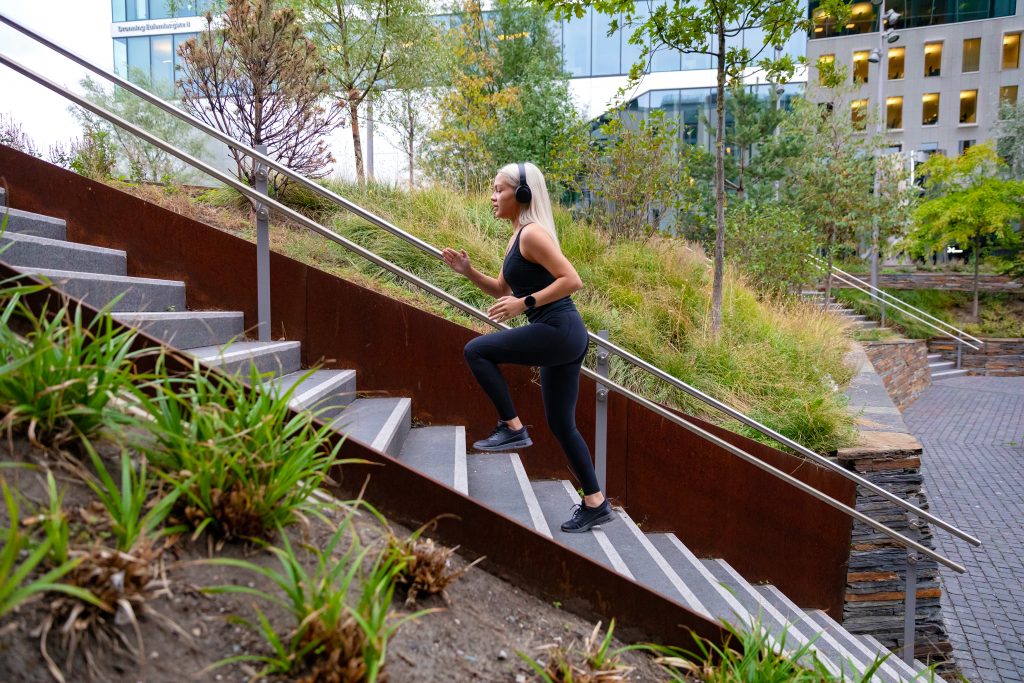
Stairs
If you are in an urban environment chances are you come in contact with a lot of stairs. How many stairs can you climb before you are winded?
Exercise:
Go to your nearest building with at least 3 floors and jog up and down their stairs if they permit it. If that won’t work find a track and field with a lot of seating and run the stairs there.
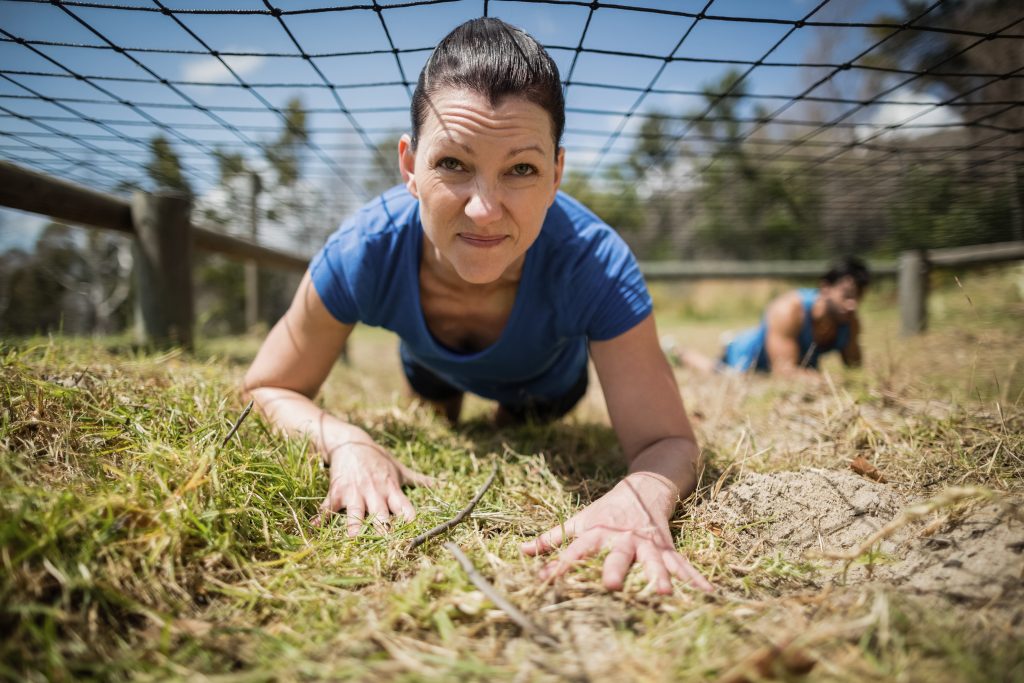
Crawl
Crawling, especially low crawling where your chest is on the ground, requires a lot of flexibility and total body strength, but it may be required of you to stay down in the event of gun fire, or perhaps fitting through a tight space.
Exercise:
Build a hole to crawl through 36 x 12 and 36 x 24 to practice crawling through. If the 24 inch hole is too small perhaps focus on some of the more vigorous activities listed elsewhere in this article before attempting this exercise.
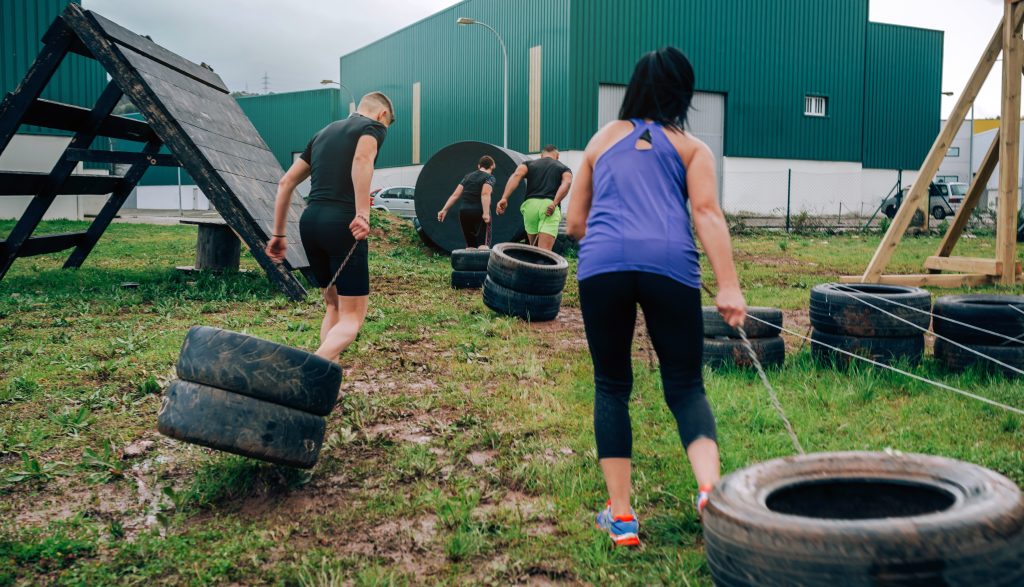
Drag weight
Sometimes you have to bring gear with you when you crawl. For this I recommend dragging it. Whether it’s a rifle in a drag bag, or a tarp piled high with supplies, being able to pull more than just your body weight in a crawl can be helpful.
Exercise:
In conjunction with the above crawl exercise, try dragging your bug-out gear with you through the “hole” that you made. Additionally, you can practice dragging things from a standing position as well, maybe a large tire on a rope, or a weighted sled.
Be careful not to over-exert yourself, and cause injury. As with all of these exercises, know your limits.
